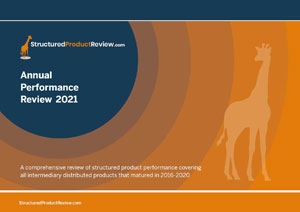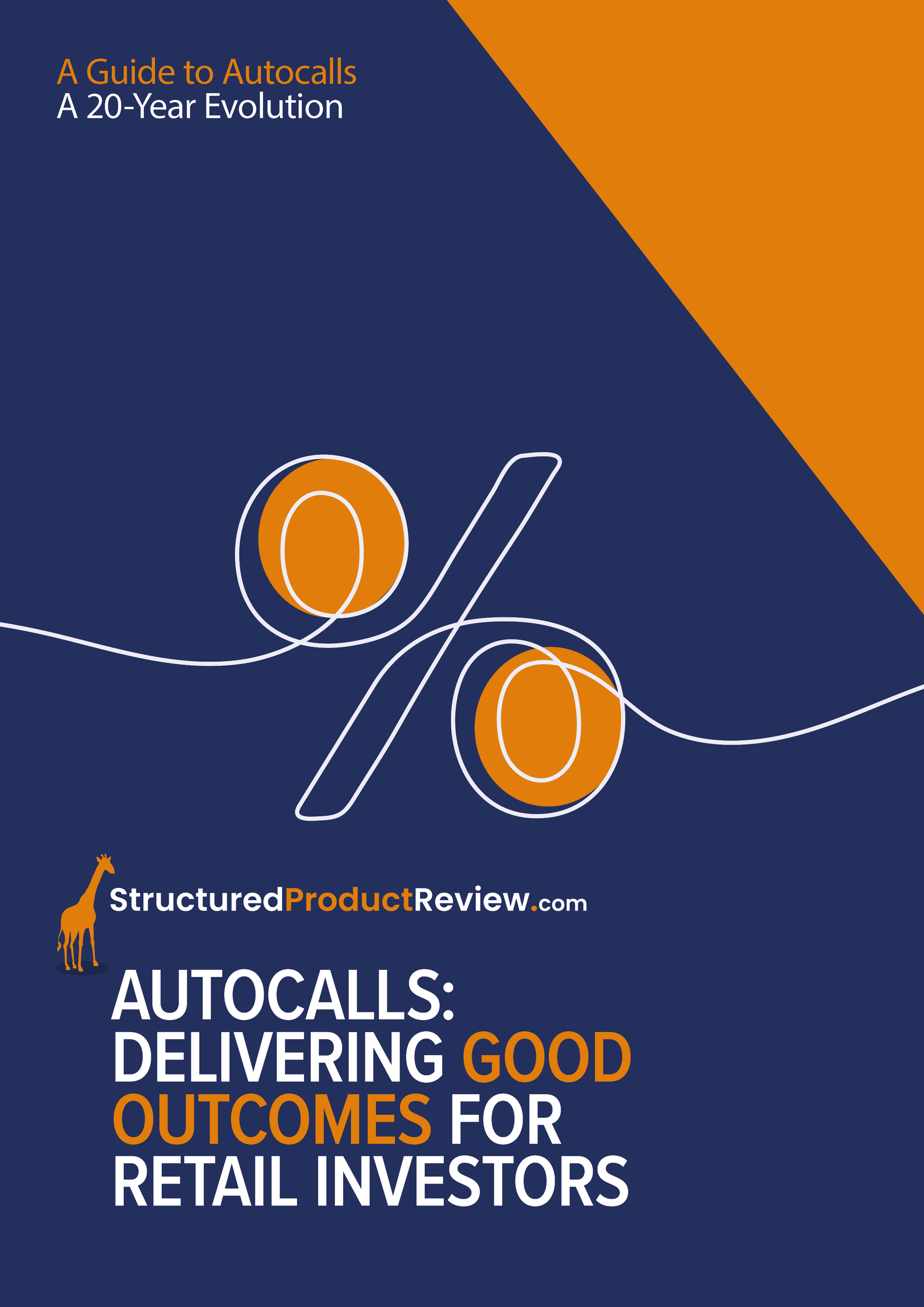This article by Rob Kingsbury was first published on StructuredProductReview.com in July 2012. Minor amendments have been made for this republishing in December 2022
What if structured products were the most common form of investment and mutual funds were only now making inroads into the market, how would we view these new kids on the block? Rob Kingsbury, Editor of Protected Product Review, takes a tongue-in-cheek view.
What if, it was not the mutual fund that had its origin in the Netherlands in 1774, and been used in the US since the 1920s and the UK since the 1930s? Rather, the product with this long history in the market had been the structured product.
In this alternative universe, the reason structured products have become the dominant investment vehicle over the past 80-90 years is due to five fundamentals:
1. They have defined terms and outcomes
2. They have defined investment periods
3. The potential return on capital is known from the outset
4. They offer various levels of capital protection
5. They allow effective tax planning
A typical product is issued in the form of a contract from a financial institution, usually a bank and its performance is linked to a benchmark, typically a single market index. Investors in a typical product will receive a known return on their capital at the end of the investment term, usually 5 or 6 years, as long as the benchmark is at least equal to or above the level it was at when the investment started (the strike date). What investors particularly like about this is that the benchmark only needs to stay at the same level, i.e. rise 0%, between the strike date and the end of the investment term and the product will pay out the full percentage return. A simple structured product at present is offering around 60% return on capital after 6 years, on this basis.
As well as offering this defined outcome – i.e. a set return on a known date, in defined market scenarios - typical products can protect capital, either 100% (such as deposit based plans) or against all but the most extreme market conditions (i.e. the benchmark has to fall more than 35% over the maximum term before capital is at risk).
As might be expected, over the past 90 or so years the market has devised several variations on the product. One example is the autocall investment that offers a set percentage return on capital after a year if the benchmark index is at or above its start level on the first anniversary of the strike date. If the benchmark is below that level the investment rolls over to the next year, when if the index is at or above its start level it will deliver twice that return and so on until the end of the term, normally 6-8 years. At that time, should the benchmark still be below the strike date, investors receive their capital back or suffer an equivalent loss in line with the fall in the benchmark but only of it has fallen below the barrier protection.
However, defensive variations on these themes will pay a positive return even if the index is down (up to 35% in some cases) at the end of the investment term, which gives investors added opportunity to obtain the known percentage outcome.
The upside potential is balanced against the level of protection required, so that 100% ‘protection’ invariably results in a lower potential gain than those that have the 35% barrier built in but the former does mean that bar a substantial disaster in the market or the issuer of the contract becoming insolvent, the investor will receive their capital back intact.
Charges are set and payable at the start of the investment period – normally ranging from 1% - 3%. These charges are calculated in the original design of the product so do not affect the capital protection levels. The charges do affect the investment return, in that they govern the capital available for purchase of derivatives, but the investor knows that effect from outset in that the potential return is clear and upfront.
From a tax point of view, large numbers of these are growth products that fall under HMRC capital gains tax rules and so gains can be set against individual investors’ CGT exemptions.
The main downsides to structured products are, of course, the potential for markets to fall dramatically and breach the capital protection barrier, or for the financial institution which issues the contract to fail, in which circumstances the investor could suffer a significant loss.
Nevertheless, over the past 90 years investors have turned to structured products because they offer defined terms and investors know how long their investment will last, what return they will get on their capital and the optional levels of capital protection they can balance against their attitude to risk.
New kids on the block
Now, a new product has been introduced into the market. It’s called a mutual fund. This product seems like a good idea. It invests in the shares or debt of trading companies and pools the investments of many different investors into ‘collectives’. Funds are run by fund managers, who use research teams to help them examine and select from the thousands of companies available and they build portfolios of the companies that they believe will make money for the fund. Using these strategies and in rising markets, funds could produce significant returns for investors.
However, compared to the highly popular structured products they would seem to have some disadvantages. First, there is no capital protection whatsoever and capital is fully exposed to market risk. Only the skill of the fund manager might save an investment from considerable losses if markets tumble.
Investors do not know what returns they will receive in 5-6 years’ time. If markets go on a Bull Run returns could be substantial but if markets fall the chances are investors will not get all of their capital back. That said, they could keep the money invested for longer in the funds and hope the markets rebound.
The performance of the investment depends on the fund manager and their back room team. Choosing one fund manager over another could see the investment suffer. There is no way of knowing if the fund manager is capable of outperforming the market except by looking at his/her past performance record, which, as we all know, is no guide to future performance.
If the fund manager leaves the company or switches fund, which happens on a regular basis, then it may be necessary to pull out of the fund if the new manager is not considered to be of the same calibre, with potential transactional, tax and performance losses.
The funds charge annual management charges, typically around 1% per annum which is taken from the fund, reducing its performance every year. Fees are paid even if the fund makes a loss for the investor.
The big question is should investors take a chance on these new kids on the block, these mutual fund investments?
The answer, of course, is yes. The investor looking to maximise returns and mitigate the inevitable risk in his/her portfolio considers putting money in both. The structured product for the surety of the defined outcome and the new mutual fund for the human hand on the tiller that can take advantage of opportunities in the market and potentially boost returns. By combining their different styles and options, the investor, or their financial adviser, can create a balanced and diversified portfolio of investments that can be used to good effect in short, medium and long-term investment strategies.
Structured investments put capital at risk
Also in this section
- 2,000 and counting
- Q2 2024 maturity results
- 20 years of autocall maturities
- Product focus - June 2024
- Fixed income or interest?
- Maturities of the month - May 2024
- The barrier debate - revisited
- Product focus - April 2024
- Maturities of the month - April 2024
- Time to call
- I don't believe markets are ever too high for Structured products!
- Notes on counterparty exposure
- Return of Nikkei
- Q1 2024 issuance
- Q1 2024 maturity results
- Structured Products – AAAAAGH!
- Hop in CIBC
- Re-enter Santander
- How to build a financial fortune - revisited
- Issuance in 2023
- Where's the risk?
- Questionable offerings
- Challenging the case against structured products - 'Loss of dividends'
- Navigating the investment landscape
- Challenging the case against structured products - Counterparty risk
- 6-year autocalls approaching final destination
- 1,750 FTSE capital at risk autocall maturities
- The leopard that changed her spots
- Q3 2023
- Challenging the case against structured products - Keydata
- Dilemmas for UK IFA's and the unique role of Structured Products
- 'High charges'
- Precipice bonds
- Intro
- FTSE 100 Contingent Income
- Indexing the indices
- Something different
- Investing through volatility
- 100 10:10s
- The best or worst?
- The 10%/25% 'Rule' that never was
- Structured products and the yield curve
- Fixed income: Capital at risk?
- Prospects for UK inflation - and fun with A.I!
- The Barrier Debate
- More Deposits for now
- Last of the Americans
- What if?
- Time heals all wounds, we hope...
- How to diversify portfolios using structured products?
- The Proof Is In The Pudding...
- Debunking Structured Misconceptions
- 1,500 FTSE Capital-at-Risk Autocall Maturities
- Q3 2022 Maturity Results
- What do we prefer?
- Deposits vs Capital ‘Protected’
- There’s time yet…
- Where did you invest your clients?
- A Six-Month Reflection
- Return of the Rev Con
- Happy 2nd Birthday FTSE CSDI
- Q2 2022 Maturity Results
- The best and worst yet still the best
- Critique my Suitability - Mariana 10:10 Plan June 2022 (Option 2)
- 10/10 for 55 10:10’s
- Q1 2022 Maturity Results
- 'How to build a financial fortune': a follow up
- Critique my Suitability - Mariana 10:10 Plan April 2022 (Option 2)
- 2021 Capital-at-Risk Autocall Maturity Review
- An unwelcome return...
- CSDI's First Birthday
- Bon Anniversaire
- Introducing the FTSE Custom 100 Synthetic 3.5% Fixed Dividend Index
- Q3 2021 Maturity Results
- Critique my Suitability - Mariana 10:10 Plan October 2021 (Option 2)
- Blurring the lines...
- Beware of false knowledge; it is more dangerous than ignorance
- Good news, bad news...
- Certainty is Certainly a Benefit
- Critique my Suitability - Mariana 10:10 Plan September 2021 (Option 2)
- A Twenty-Year Progression
- Q2 2021 Maturity Results
- Nine 8:8s Post Positive Returns in Falling Markets
- Critique my Suitability
- Q1 2021 Maturity Results
- Morgan Stanley’s Marvelous Maturity Medley
Current Products
We review the UK's retail structured investment sector, providing pertinent support for Professional Advisers and relevant research tools.
View all ⟶


